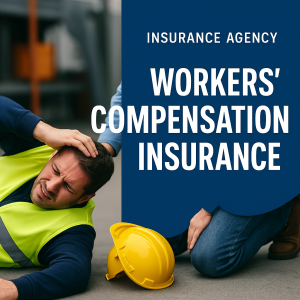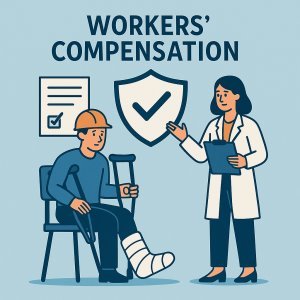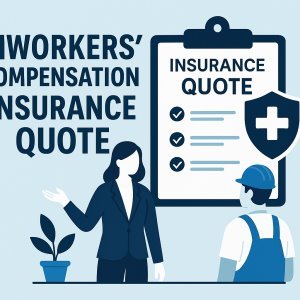
Cheap Workers’ Comp? Georgia Staffing Companies—Read This First
July 23, 2025
Vehicle Patrol Security Guards: Managing Auto-Related Workers’ Comp Exposures
July 23, 2025In the bustling world of warehouse operations, where every move is choreographed for efficiency, the unseen force keeping the gears turning is the workforce. Yet, behind the hum of forklifts and the shuffle of inventory lies a critical aspect ofen overshadowed-workers’ compensation management. Preparing for an audit in this landscape is not just a matter of compliance; it’s a strategic exercise in safeguarding both employees and business viability. This article explores the essential steps and insights for audit planning focused on warehouse staffing workers’ comp,shedding light on how proactive measures can transform a routine inspection into an prospect for operational clarity and risk mitigation.
Table of Contents
- Understanding Workers Comp Risks in Warehouse Staffing
- Key Documentation and Recordkeeping Strategies for Smooth Audits
- best Practices for Training and Safety Compliance in Warehousing
- Recommendations for Effective Communication with Audit Teams
- Q&A
- Wrapping Up
Understanding Workers Comp Risks in Warehouse Staffing

Warehouses inherently pose a complex landscape of workers’ compensation risks due to the high-paced, physical nature of the work environment. Employees navigate heavy machinery, repetitive lifting, and constant movement, all of which multiply the chances of injuries ranging from minor strains to severe accidents. Understanding these risks requires dissecting roles and tasks, ensuring that each position’s specific hazards are identified and addressed. For instance, forklift operators face collision and tipping dangers, while order pickers wrestle with slips, trips, and falls from elevated platforms. Addressing these risks proactively translates into more accurate workers’ comp classifications, which can prevent costly audits and unexpected premium increases.
Effective risk management in warehouse staffing hinges on compliance and detailed record-keeping, paired with strategic training programs designed to mitigate common injuries. Prioritize these focus areas to strengthen your audit preparedness:
- Comprehensive Job Descriptions: Clearly outline duties to support proper classification and rate application.
- Incident Documentation: Maintain exact records of all workplace injuries, including near-misses.
- Employee Training: Implement ongoing safety training emphasizing ergonomics and equipment use.
- Regular Safety Audits: Conduct internal reviews to address hazards before external auditors do.
| Warehouse Role | Top Risk Factor | Common Injury |
|---|---|---|
| Forklift Operator | Vehicle Collisions | Fractures, Head Injuries |
| Order Picker | Falls from heights | Sprains, Broken Bones |
| Loader/Unloader | Repetitive Strain | Tendonitis, Muscle Strains |
Key Documentation and Recordkeeping Strategies for Smooth Audits
Maintaining comprehensive and organized documentation is the cornerstone of a streamlined audit process, especially when managing workers’ compensation for warehouse staff. Keep clear, up-to-date records for each employee, including hiring documents, training certifications, and injury logs. digitizing emergency contact info and medical reports not only expedites audits but safeguards sensitive data. A solid file system categorized by employee ID or department simplifies retrieval during audit requests, reducing stress and potential costly mistakes.
Additionally, implement consistent recordkeeping practices around injury reporting and claims handling.Use checklists and timestamp logs to track every report and corrective action taken post-incident. Solid evidence of compliance with OSHA standards and your insurer’s reporting protocols reassures auditors of your proactive risk management. Consider maintaining a dashboard summarizing key metrics such as claim frequency, average resolution time, and safety meeting attendance:
| Metric | Current Period | Previous Period | Trend |
|---|---|---|---|
| Claim Frequency | 3 | 5 | ⬇️ |
| Avg. Resolution Time | 12 days | 15 days | ⬇️ |
| Safety Meeting Attendance | 95% | 90% | ⬆️ |
Best Practices for Training and Safety Compliance in Warehousing
Ensuring a safe warehouse environment begins with thorough and consistent training programs tailored to the specific needs of your workforce. Focus on engaging workers with practical, hands-on sessions that cover essential topics such as proper equipment operation, hazard recognition, and incident response. Integrating regular refresher courses and safety drills will reinforce critical protocols, ensuring both new hires and seasoned employees are aligned with compliance standards.Visual aids, such as clear signage and infographics, can also serve as constant reminders that promote a culture of vigilance.Remember, safety isn’t a checkbox-it’s a continuous practice embedded in daily routines.
To maintain compliance and reduce workers’ compensation claims, consider implementing a obvious system for documenting training and safety assessments. The following table highlights key metrics to track for effective monitoring:
| Metric | Description | Recommended Frequency |
|---|---|---|
| Training Completion Rate | Percentage of employees who have completed mandatory courses | Quarterly |
| Incident Reports | Number of reported safety incidents or near misses | Monthly |
| Equipment Inspection | Number of equipment checks logged | Weekly |
| worker Feedback | Employee safety concerns or suggestions received | Ongoing |
Establishing this data-driven approach allows management to identify gaps quickly and adjust training accordingly, turning audit prep from a stressful event into a streamlined process that safeguards both employees and business continuity.
Recommendations for Effective Communication with Audit Teams
Clear communication forms the backbone of a smooth audit process. ensuring all documentation is organized and readily accessible will help build trust and minimize back-and-forth clarifications. Emphasize clarity by sharing insights into your staffing strategies and workers’ compensation protocols early. This proactive approach can prevent misunderstandings and demonstrate your commitment to compliance.
When interacting with audit teams,consider adopting these communication best practices:
- Prepare concise summaries of staffing metrics and incident reports to streamline discussions.
- Use visual aids such as charts or tables to clearly convey complex compensation data.
- Encourage open dialogue by asking clarifying questions and confirming understanding frequently.
- Designate a educated point of contact who can provide immediate answers and follow-up as needed.
| Audit Communication tip | Benefit |
|---|---|
| Concise Documentation | Speeds up review process |
| Visual Data Presentation | Enhances clarity |
| Open Dialogue | Reduces miscommunication |
| Dedicated Point of Contact | Ensures consistent follow-up |
Q&A
Q&A: Audit Prep-warehouse Staffing Workers’ Comp
Q1: Why is preparing for a workers’ comp audit critical in warehouse staffing?
A1: Workers’ compensation audits help ensure that the payroll reported matches the actual work performed. In warehouse staffing, where roles and hours can fluctuate rapidly, an audit verifies accuracy and prevents costly misclassifications or underreported wages. Proper prep reduces surprises, potential penalties, and streamlines insurance costs.
Q2: What specific challenges do warehouse environments pose for workers’ comp audits?
A2: Warehouses often have diverse job roles-from forklift operators to packers-with varying risk levels and payroll complexities. Temporary or seasonal staffing adds a layer of difficulty in tracking hours and correct job classifications. These factors require meticulous record-keeping to avoid audit discrepancies.
Q3: How can warehouse employers organize payroll records for a smoother audit?
A3: Employers should maintain detailed, up-to-date records segregated by job classification and hours worked. Time cards, billing statements for temp workers, and subcontractor agreements should be readily accessible. Digitizing these documents can save time and reduce errors during an audit.
Q4: What role does correct employee classification play in workers’ comp audits?
A4: Accurate classification ensures workers are assigned the proper risk codes and premium rates. misclassification-such as labeling a high-risk forklift operator as a general laborer-can lead to underpayment or overpayment of premiums. Clear job descriptions that match payroll entries are vital.
Q5: Can partnering with a staffing agency help in audit preparation?
A5: Yes,a reputable staffing agency specializes in compliance and can provide accurate payroll summaries and classification guidance. They often handle part of the administrative workload, reducing the burden on warehouse employers and improving audit readiness.
Q6: What are common pitfalls to avoid during a workers’ comp audit?
A6: Common mistakes include incomplete documentation, failing to report subcontracted labor, neglecting to update payroll records regularly, and ignoring changes in roles or employee status.Proactively addressing these issues helps avoid costly adjustments post-audit.
Q7: How can warehouse employers leverage audit findings for operational improvement?
A7: Audit results highlight inconsistencies or gaps in payroll and classification practices. Reviewing these findings enables employers to implement better tracking systems, improve training on reporting policies, and negotiate more precise insurance premiums moving forward.
Q8: When should warehouse staffing firms start preparing for a workers’ comp audit?
A8: Preparation should be ongoing, with intensified focus as the audit notification approaches. Ideally, start at least 30-60 days in advance to collect and review documentation, clarify employee classifications, and correct any discrepancies before the auditor’s arrival.
This Q&A highlights key insights for warehouse employers navigating the complexities of workers’ compensation audits in staffing environments, promoting accuracy, compliance, and operational confidence.
wrapping Up
In the intricate dance of warehouse operations,preparing for a workers’ comp audit is more than just ticking boxes-it’s about weaving a seamless story of accuracy,transparency,and proactive planning. By understanding the nuances of staffing, maintaining detailed records, and fostering clear communication, businesses can transform audits from daunting hurdles into opportunities for clarity and improvement. As you navigate this process, remember that thorough preparation not only safeguards compliance but also paves the way for a safer, more efficient workplace where every worker counts.
“This content was generated with the assistance of artificial intelligence. While we strive for accuracy, AI-generated content may not always reflect the most current information or professional advice. Users are encouraged to independently verify critical information and, where appropriate, consult with qualified professionals, lawyers, state statutes and regulations & NCCI rules & manuals before making decisions based on this content.”








